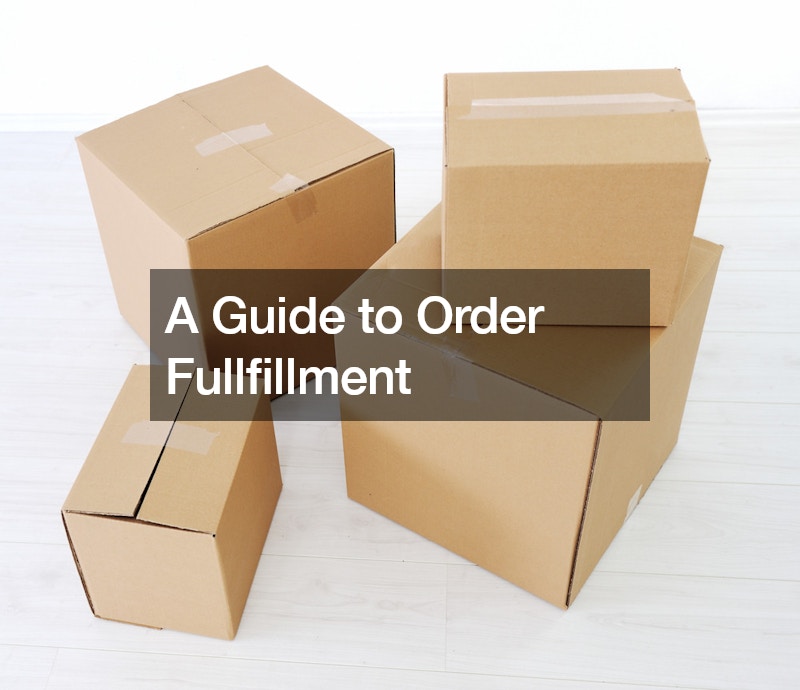
Order fulfillment is a critical component of any e-commerce business, encompassing all activities involved in processing, packing, and shipping orders to customers. As e-commerce continues to grow, efficient order fulfillment not only ensures customer satisfaction but also plays a vital role in maintaining the operational health of an online business. This guide explores the various facets of order fulfillment, emphasizing the significance of electronic fulfilment and providing practical advice on optimizing the process.
Understanding Order Fulfillment
Order fulfillment involves several key stages: receiving inventory, processing orders, packaging, shipping, and handling returns. Each stage must be managed effectively to ensure that customers receive their products promptly and in good condition.
The process starts when an inventory is received and stored; it ends when a customer receives their order and is satisfied with their purchase. Effective fulfillment strategies can reduce shipping times and costs, improve inventory management, and enhance overall customer experience.
electronic fulfilment: Streamlining the Process
electronic fulfilment refers to the use of automated systems to manage the order fulfillment process. This technology plays a crucial role in modern e-commerce by allowing businesses to handle large volumes of orders efficiently. electronic fulfilment systems can integrate various aspects of the fulfillment process, from inventory management and order processing to shipping logistics and tracking. By leveraging these systems, businesses can speed up their order processing times, reduce errors, and maintain up-to-date inventory records, ensuring that products are available when customers need them.
Setting Up an Effective Fulfillment Strategy
To set up an effective fulfillment strategy, it is essential to understand the shipping preferences and expectations of your customers. Many customers expect fast and free shipping, influenced by major players like Amazon with their Amazon Prime service. Therefore, deciding on the right shipping strategy—whether it’s free shipping, flat-rate, or variable pricing—is crucial. This decision should balance customer satisfaction with the cost-effectiveness of the fulfillment process.
Furthermore, the choice of packaging material and the method of shipment are important considerations that can impact both the cost and the customer’s unboxing experience. Adequately protecting the product while minimizing waste is a key concern. Additionally, considering environmentally friendly packaging can enhance a brand’s image and appeal to a segment of consumers who prioritize sustainability.
The Role of Technology in Order Fulfillment
Technology plays a pivotal role in modern order fulfillment. Many e-commerce businesses rely on electronic fulfilment solutions to automate and streamline their processes. Software solutions like Shopify provide tools that integrate with various shipping carriers and offer features such as real-time shipping cost calculations, label printing, and tracking information updates. These tools can significantly reduce the manual effort required in the fulfillment process, allowing businesses to focus more on sales and customer service.
Moreover, utilizing electronic fulfilment apps, such as Desktop Shipper, businesses can input package dimensions and product weights once, and the app automatically calculates the shipping cost for each order. This automation ensures accuracy in shipping charges and efficiency in processing orders.
Choosing the Right Fulfillment Model
Businesses can choose from different fulfillment models depending on their size, order volume, and specific needs. Self-fulfillment, third-party logistics (3PL), and dropshipping are common models. Each has its pros and cons:
- Self-fulfillment: Ideal for startups and small businesses with manageable order volumes. This model offers maximum control over inventory, packaging, and shipping, allowing for personalized customer interactions.
- Third-party logistics (3PL): Suitable for businesses experiencing growth and increased order volumes. A 3PL can handle large-scale logistics operations, often providing faster shipping times and cost savings from economies of scale. However, businesses might sacrifice some control over the packaging and customer service experience.
- Dropshipping: In this model, products are shipped directly from the supplier to the customer. Dropshipping reduces the need for inventory management but offers less control over shipping speed and product quality.
Continuous Improvement in Fulfillment
Continuous improvement is essential in order fulfillment. Regularly assessing and refining the fulfillment process can lead to better efficiency and customer satisfaction. Analyzing customer feedback related to shipping speed and packaging can provide valuable insights into areas for improvement. Additionally, staying updated with the latest advancements in electronic fulfilment technologies can help businesses maintain a competitive edge.
In conclusion, effective order fulfillment is crucial for the success of any e-commerce business. By leveraging electronic fulfilment technologies, choosing the right fulfillment model, and continuously improving their processes, businesses can ensure they meet customer expectations and operate efficiently. This strategic approach not only enhances customer satisfaction but also supports sustainable business growth. Do your research when doing electronic fulfilment to optimize the process. It is important to do your research before delving into something this important.
.

